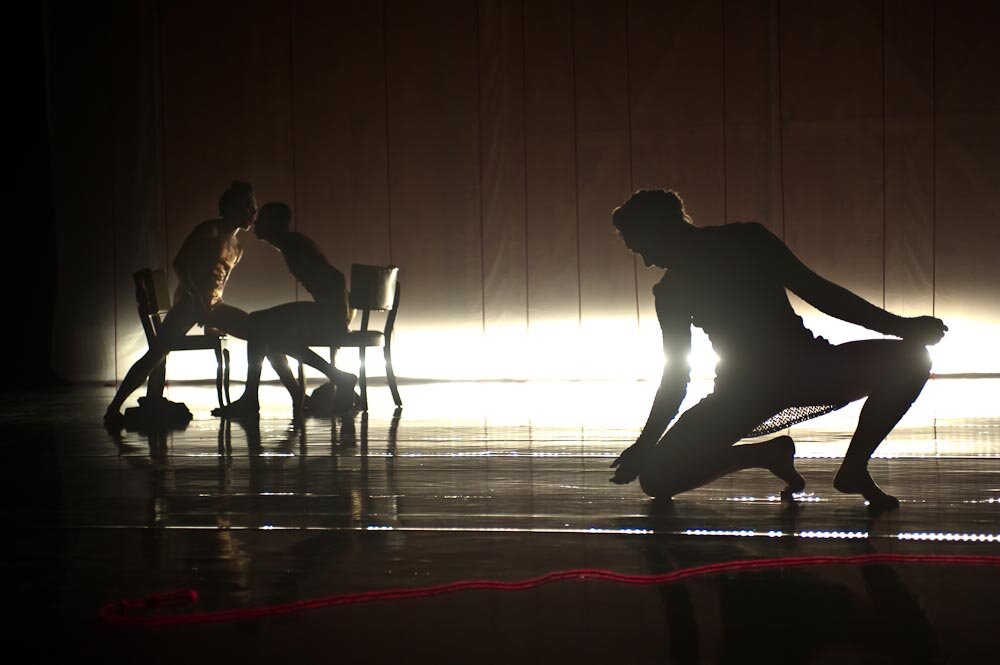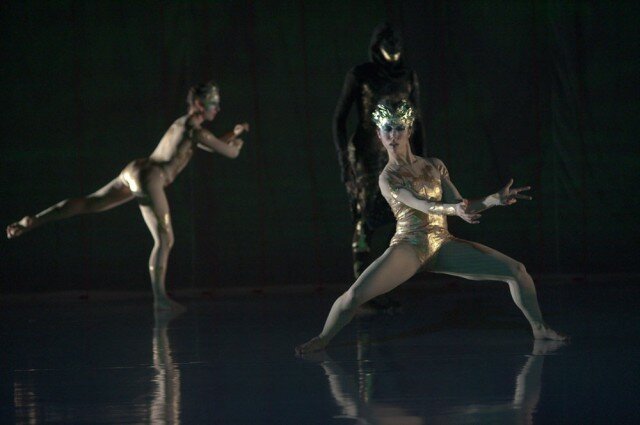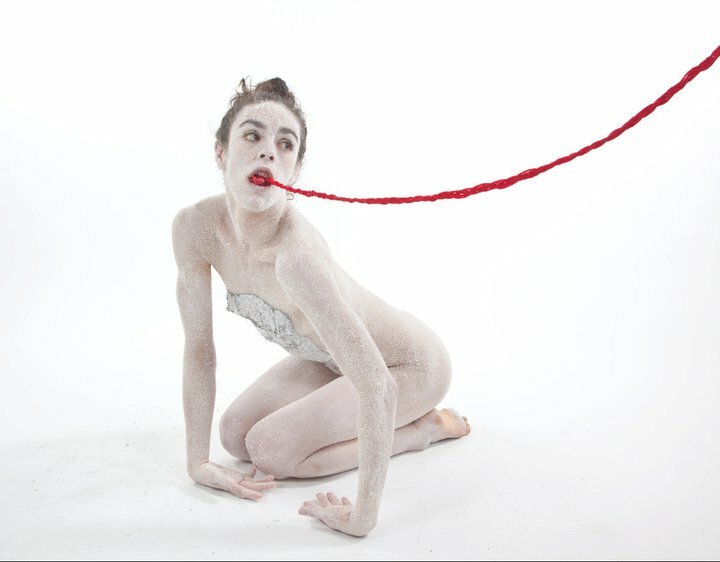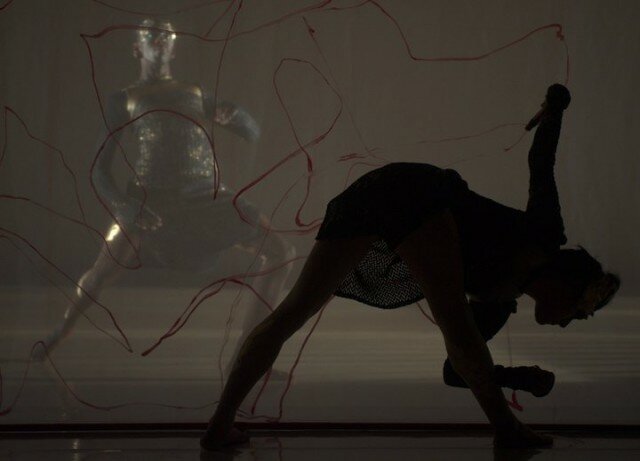Last Friday night, after a few Euros (shot of Fernet and a Radeberger) at St. John’s, I was lying flat on my back trying to keep the people I saw from spinning. I was having no luck, though, because I was watching a dance performance (of sorts: It was also an experiment, research, and rehearsal). Zoe | juniper‘s “No one to witness and adjust, Study #4” took place in a small studio at Velocity Dance Center — you signed up for a half-hour block ahead of time, and at the appointed time a guide appeared in the Velocity lobby.
She read off a list: Be quiet walking in. Lie down where you’re told. Don’t try to sit up. You can move your head, but try to keep arms and legs inside the ride at all times. Leave your shoes and other belongings in the hall, you can collect them afterward. (Allll right, you thought, conflicted. Lots of instructions, but the lying down seemed easy enough.) At the doorway, the dancers greeted the audience and showed them over to taped off sections of the floor, where they were to stretch out and rest their heads on small pillows. Then the music (which would have contained excerpts from some of the following: FUCK BUTTONS, Henryk Gorecki, Glenn Gould, Greg Haines, Morgan Henderson, Ryoji Ikeda, Loscil, Tito Ramsey) and dancing began.
Juniper Shuey was crouched at one end of the shoebox-shaped studio with a camera, and you at first thought he might be responsible for the video playing on the ceiling, but yes and no: It didn’t seem live, though he was likely the one to have processed and edited the dance pieces shown, along with cosmic interludes. Hanging from the ceiling were casts of body parts made by Derek Ghormley with Zoe Scofield: an upper torso, an arm, a small bit you didn’t recognize, a chunk of human.
Stepping around and between the bodies on the floor were the dancers, in white tops, black tights, and hands dyed red: Britt Karhoff, Kim Lusk, Erin McCarthy, and Zoe Scofield. The choreography came in bits (Scofield would say something like, Have we done this one yet?), and the dancers might start walking in circles around you, hitting slo-mo every third step. Arms drew back, were cocked, sliced the air.
One segment was particularly ballet-centric, though Scofield’s interests in ballet have often to do with its limits, rather than its perfected nature. Here she brushed out tendus with her feet, began then abandoned developpés at calf-height. Earlier, she’d been strolling with a little bounce to her walk, a small smile on her face.
From my vantage point, I could see only so much: McCarthy’s torso framed by Karhoff’s legs, for instance. But the floor brought dance into my bones, each footstep transmitting an impact I’d have underestimated from a chair’s comfort. Bodies loomed over me, developing strange perspectives. The air in the tiny studio grew thickly warm and Scofield paused to turn a fan on. Occasionally a dancer glanced at me and met my eyes, and if she was close, leaning over, it quickly became a little too soul-baringly uncomfortable — a few feet away, and we could have a moment of respectful recognition. Once, an audience member and I locked eyes, and she reddened and looked the other way.
At some point, I realized I felt like a baby on its back, flopping my head around to see what’s what, amazed at the height of everyone, and really began to enjoy myself immensely. It felt like I’d never seen dance before, never quite realized that articulation looked that way. It was almost impossible to critique dance this way since it didn’t conform to prior experience — I found myself registering qualities, Karhoff’s friendly curiosity, the cool serenity from McCarthy, the shy lightness of Lusk, all of which would require revision in a succeeding segment.
I had to restrain myself from high-fiving the red hands that strayed into my field of view. Not to high-five, really, but to feel that palm’s movement. To carry it. Suddenly we were done.
These “chamber studies,” which began in October 2012, will culminate in BeginAgain, a larger piece coming March 2014 at On the Boards. (So far there’s been Kate&Zoe at City Arts Festival, No one to witness #2 at Frye Art Museum’s Moment Magnitude, and For Forgetting at The Goat Farm/gloAtl.) But just as plenty of studies now grace the walls of museums and galleries, these performances also have the opportunity to live on their own, in the minds and bodies of people who have participated in them.
Some in the performing arts believe that there is a “finished” product, and keep the curious away until opening night. That’s a model of a performer/audience relationship, but it’s not, certainly, the only one. My presence was literally an obstacle for the dancers, a disruption, but I think they sensed, from the response of others as well, that they were making dance with us, disruptively. It’s difficult often to tell people what you mean by modern dance, but in this sense, it’s easy: What’s modern is the willingness to push something out in public(s) before you think you’re ready, to iterate its development and use that feedback to develop further, to organize creativity rather than try to direct it.







